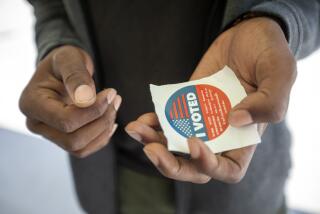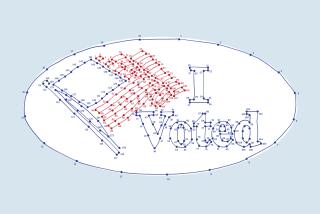Yes, you can vote in the California presidential primary if you’re homeless
- Share via
The March 3 California primary election is just days away, and The Times has been answering reader questions and updating our guide on what you need to know before voting.
One of the questions we received: If I’m homeless, can I vote?
Yes, you can. Here’s what else to keep in mind.
Can I register to vote if I’m homeless?
Yes. The deadline to register to vote for the California primary was Feb. 18, but you can still register to vote through election day at a county elections office, neighborhood polling place or community vote center.
You must be 18 years or older on election day, a U.S. citizen and state resident to be eligible to vote. You cannot be in state or federal prison or on felony parole, or deemed by a judge to be mentally incompetent.
You will need to update your voter registration if your address has changed.
Los Angeles Times editorial board endorsements for the U.S. House, California ballot measures and more.
If I don’t have identification or a street address, how should I fill out my voter registration card?
Section Three will ask you to provide identification, either a California driver’s license number, a California ID card number or social security number. If you do not have any of this information, you can leave this section blank and still register to vote.

Section Four will ask for your address. If you do not have a street address, you can describe the place where you mostly spend your time. You can include cross streets, routes, N, S, E, W, etc. This will help elections officials establish your right to vote in a particular precinct.

Section Five will ask for the address where you receive mail. You can fill this out with any mailing address where you’ll be able to receive mail, so elections officials can send you voting materials. This can be a P.O. box or a mailing address of a friend, family member or organization that allows others to use their address.

What do I need to know about voting in person?
Thanks to a new California law, some counties — Los Angeles included — are ending the use of neighborhood polling places and replacing them with a more limited number of community vote centers. L.A. voters can cast a ballot at any vote center in the county.
The county will also open Flex Vote Centers in various organizations around Los Angeles in an effort to provided targeted voting services to voters with distinct needs, including senior citizens, people experiencing homelessness, voters with disabilities and incarcerated voters. These Flex Vote Centers will provide all the services and equipment found at traditional vote centers.
L.A. Vote provides the full Flex Vote Center schedule.
What do I need to know about vote-by-mail?
The Feb. 25 deadline to request a vote-by-mail ballot has passed. If you did request a vote-by-mail ballot by the deadline, you can return it by mailing it by March 3 or dropping it off your polling place or county elections office on election day.
If you live in L.A. County or one of other 14 counties using vote centers, you can also drop off your ballot at a secure county ballot box or at any vote center in your county.
Ballots that are postmarked on or before March 3 will be counted as long as they arrive at a county elections office no later than March 6.
What identification is required?
In most cases, you will not be required to show identification when you vote in person. If you are voting for the first time in a federal election, you may be asked to show identification if you did not provide the last four digits of your Social Security number or driver’s license or California ID number when you registered to vote.
If this applies to you, you should bring identification with you to vote, or include a copy with your vote-by-mail ballot. The state elections division has a list of acceptable forms of identification. As you vote repeatedly in other elections, your voter file will be maintained, and you should not be asked for identification.
If you do not have proof of identity or residency with you, you can cast a provisional ballot and provide identification before the end of the election canvass period.
Have more questions about the voting process? Fill out this form, which also appears below, and reporters at The Times will try to answer them.
More to Read
Get the L.A. Times Politics newsletter
Deeply reported insights into legislation, politics and policy from Sacramento, Washington and beyond. In your inbox three times per week.
You may occasionally receive promotional content from the Los Angeles Times.













